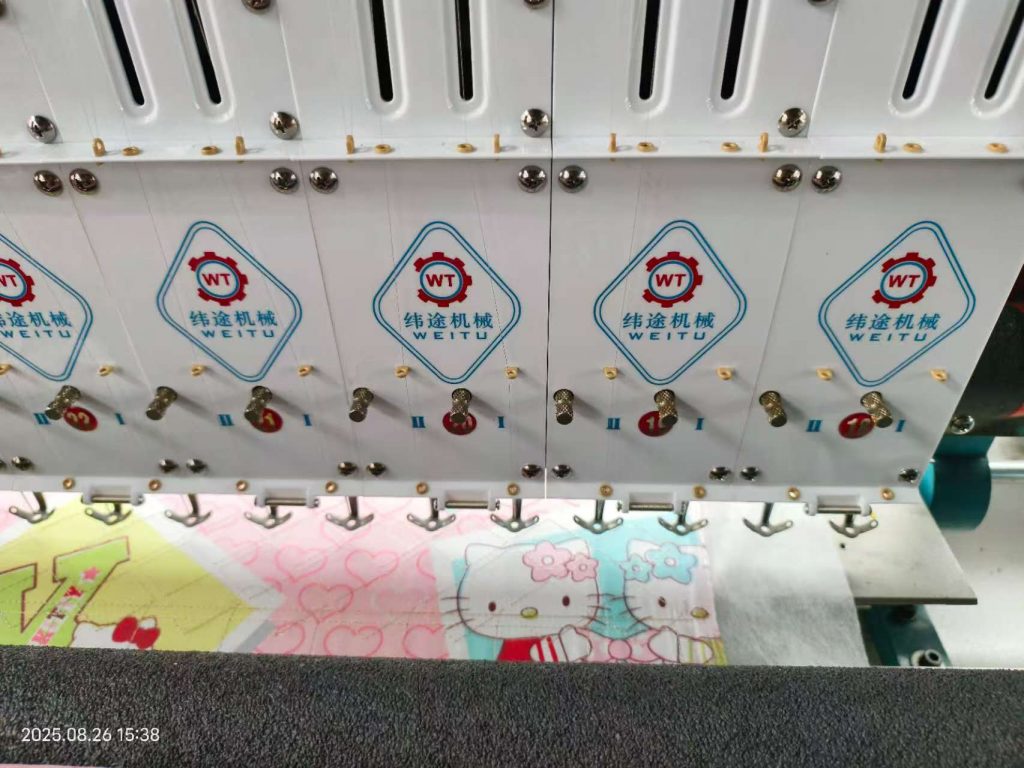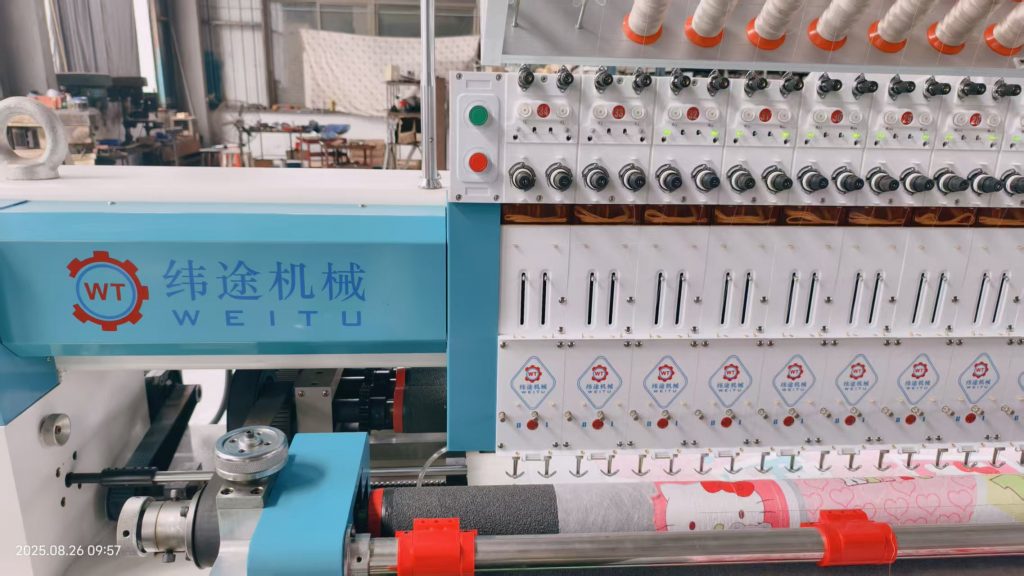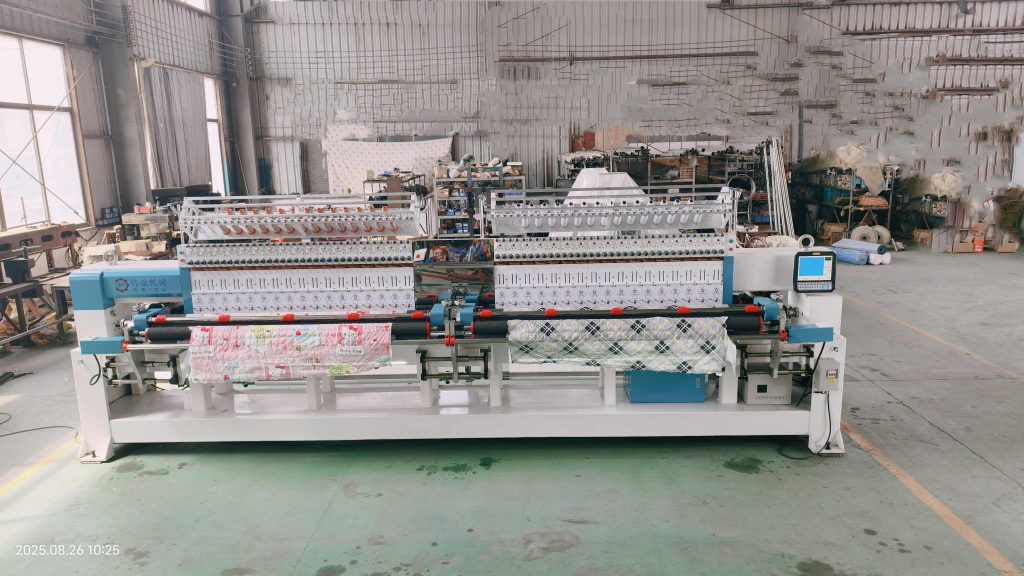Quilting with an embroidery machine is a fantastic way to combine the precision of machine embroidery with the artistry of quilting. Many modern embroidery machines come with features that allow you to quilt directly on fabric or even use quilting designs to enhance your quilt projects. Here’s a guide on how you can quilt using an embroidery machine:
1. Prepare Your Fabric Layers
•Quilt Top: This is the design or fabric pattern you want to quilt.
•Batting: Choose a batting that is appropriate for your quilt’s final purpose (e.g., cotton, polyester, or wool batting).
•Quilt Backing: Use a solid piece of fabric that is larger than your quilt top. Ensure it’s smooth and wrinkle-free.
•Basting: You can either pin, spray baste, or use a temporary adhesive to hold all the layers together.
2. Hooping the Quilt Layers
•The key challenge of quilting with an embroidery machine is hooping the layers without causing distortion. It’s generally best to work on small sections of the quilt at a time.
•Hoop one section of your quilt top, batting, and backing, making sure everything is smooth and taut. Ensure the fabric doesn’t shift while you’re hooping.
•For larger quilts, consider using a basting method that allows you to quilt one block at a time. You can then join the blocks later.
3. Choosing Quilting Designs
•Many embroidery machines come with built-in quilting designs, or you can purchase or download them from various online resources. Look for designs that are specifically for quilting, such as continuous patterns or edge-to-edge designs.
•You can also use free-motion embroidery or choose decorative stitches that simulate quilt patterns, such as swirls, meanders, or floral motifs.
4. Adjusting the Settings
•Before starting, make sure you have set up the right stitch length and tension. Quilting requires a bit more precision than standard embroidery, so test your settings on a scrap piece of fabric to ensure your stitches are secure and uniform.
•You can adjust the needle position or stitch density depending on the design and fabric you’re using.
5. Start Quilting
•Place your hooped quilt under the machine, and begin the embroidery process. Many embroidery machines will automatically move the hoop for you as the design stitches out. You may need to reposition the hoop if you’re quilting a large area.
•When quilting edge-to-edge, make sure the design lines up correctly to avoid overlapping or gaps in the stitching. You can rotate or mirror the design to ensure it fits well.
6. Use Quilting Feet and Accessories
•If your embroidery machine supports it, you may want to use a quilting foot or walking foot to help evenly move the fabric through the machine.
•Some embroidery machines offer dual feed options that help pull both the top and bottom layers of fabric evenly, reducing the risk of puckering.
7. Finish the Quilt
•After quilting all sections, you’ll need to finish the edges. This could include trimming the quilt to the desired size, adding a border, and attaching the quilt binding.
•For a more professional finish, you can machine bind your quilt with the embroidery machine.
Tips for Success:
•Practice first: Always practice your design on a scrap piece of fabric and batting to check your settings and make sure everything is working properly.
•Use a stabilizer: While you don’t need a stabilizer for all quilting projects, you may want to use one for designs that are heavily detailed or if your fabric is very lightweight.
•Go slow: Take your time with the quilting process. Speeding through it can lead to mistakes or uneven stitching.
Advantages of Quilting with an Embroidery Machine:
•Precision: Machine quilting gives you a level of accuracy that’s tough to achieve by hand.
•Consistency: You can reproduce the same design repeatedly with ease.
•Time-saving: If you’re making a lot of quilts or a large quilt, machine quilting can save significant time compared to traditional hand quilting.
| Model No. |
WT-EQ-2-2 |
| Heads and needles |
34 heads, 68 needles, 9#~16# |
| Needle distance |
50.8 mm |
| 针迹长度 |
1~12.7 mm |
| Working width |
1700 mm + 1700 mm |
| Speed |
900 rpm |
| 电压 |
380V/50hz, 3 phase |
| 电源 |
6 KW |
| 尺寸(长×宽×高) |
6000×1500×2000 mm |






An embroidery quilting machine is a type of sewing machine that combines the functions of both embroidery and quilting. These machines are designed to handle complex designs and stitching patterns, making them ideal for creating intricate embroidery designs while also having the capability to sew multiple layers of fabric, as you would in quilting.
Here’s a breakdown of what they do:
1.Embroidery Functionality:
•The machine can create detailed, decorative designs on fabric by stitching patterns that are typically pre-programmed or custom-created.
•It usually has a hoop or frame to hold the fabric taut while the machine moves the fabric around to stitch the design.
•Modern machines can connect to a computer or USB to load custom embroidery files.
2.Quilting Functionality:
•Quilting refers to sewing together multiple layers of fabric (usually a top layer, batting, and a backing layer) to create a thicker, padded fabric.
•The quilting aspect of the machine includes features like walking feet, free-motion quilting feet, and adjustable stitch lengths to accommodate quilting tasks.
•Some quilting machines are specifically designed with larger throat spaces (the area to the right of the needle) to make quilting bigger projects like full-size quilts easier.
Key Features:
•Dual Purpose: These machines allow you to switch between embroidery and quilting, so you don’t need two separate machines.
•Automated Stitching: Most embroidery quilting machines have automatic stitch settings for both types of work, ensuring precision and consistency.
•Hooping and Frame Systems: These are used to hold the fabric while it’s being embroidered, and can also be adapted for quilting.
•Built-in Designs: Many come with pre-programmed embroidery patterns and quilting templates, though they often also allow for custom designs.
Examples of what you can make with them:
•Embroidered Quilts: You can make a quilt that features embroidery as part of the design, like flowers or monograms.
•Custom Apparel: Embroidery quilting machines are popular for making custom shirts, hats, bags, and home decor items with intricate designs.
•Quilt Blocks: Some machines can quilt directly onto the fabric while also embroidering patterns like borders or motifs.
These machines are a good choice for those who want the versatility to handle both quilting and embroidery projects on one machine, saving space and money.
Specifications:
1)17″LCD with Chinese and English version. With more than 250 patterns downloaded in the computer; lock stitch, high precision
2) Power supply: 380V, 50Hz, 4.5-5kw
3) Main shaft motor: servo motor
4) Rotary hook speed: 1000rpm(max)
(Machines of non-standard number of heads and needle pitch under this series can be supplied.)
TAG:embroidery and quilting machine,quilting with embroidery machine,sewing machine for quilting and embroidery





